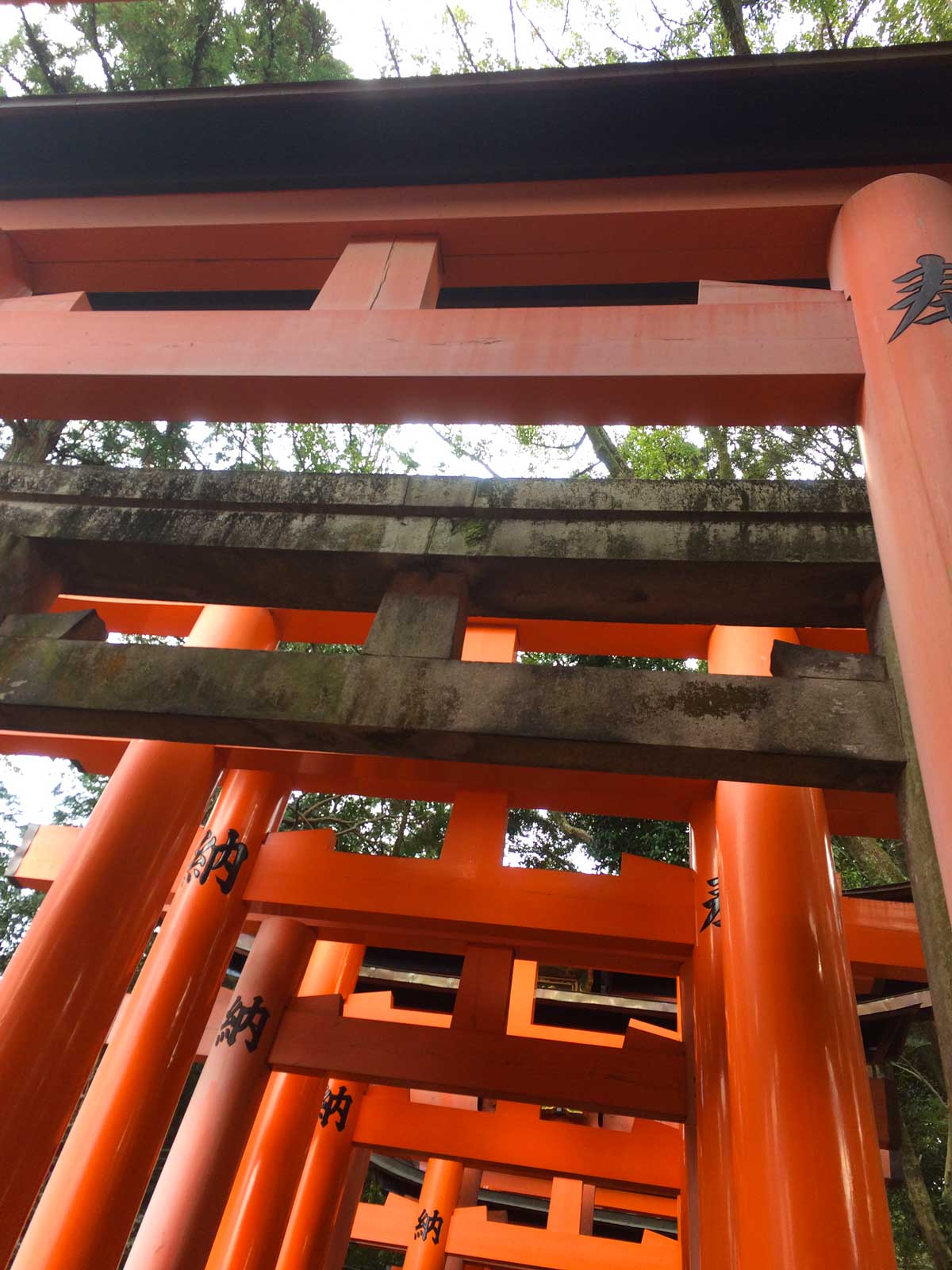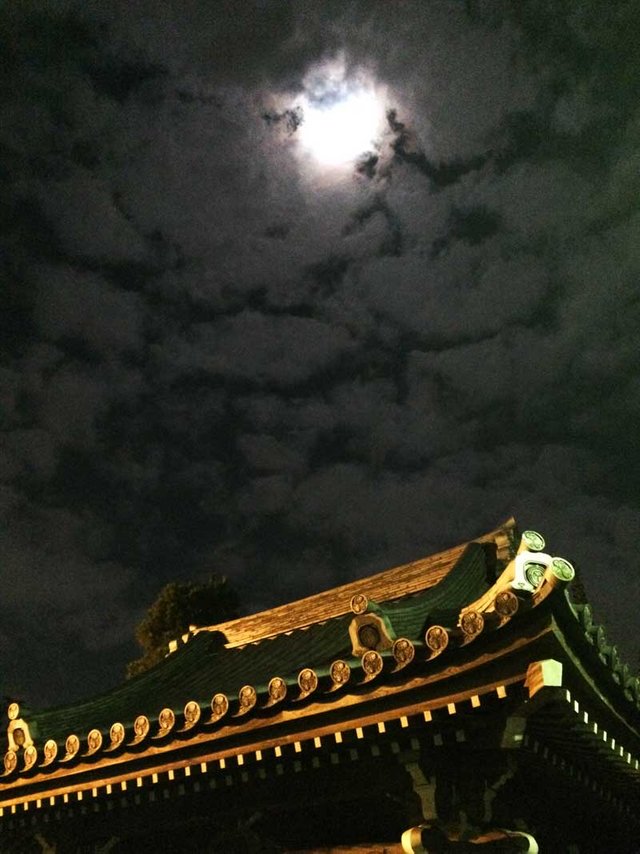An (extra)ordinary New Year’s Eve in Japan
"You'll see how fast the time goes as you grow old… months go by and you won’t even notice it!" This is what my grandmother used to tell me. Twenty years ago I could answer her with a shrug or even an eye roll. Today I understand that it was all wisdom: from last New Year’s Eve 4 months has already passed, but only now I am able to take some time and write about this journey that took me to Japan at the end of 2017. Well, it seems like yesterday. I'm a tour operator, and I traveled as tour leader for a group of six women, including two friends. I had already been in Japan with my daughter three years ago and I had fallen madly in love with the country, so I did everything I could in order to come back. Finally the chance knocked at my door, and what a shock! End of the year in the land of the Rising Sun… I was in seventh heaven.
TRADITION LOVERS
In Japan the New Year is a heartfelt celebration. In Shinto and Buddhist tradition –the two main religions– at the end of every year everyone must prepare for the new one, purifying and cleaning minds and souls from the bad deeds committed during the last 365 days (in ancient times, the Japanese New Year matched the Chinese one, following the lunar calendar, but later the celebration shifted on January 1st).
Since the beginning of December the whole Country is lit up. The Japanese are crazy about lights, and they definitely know what they are doing. Tokyo in particular sparkles and shines, and the largest shopping centers in the city battle with brightly themed decorations, as well as city parks. We are talking about hundreds of thousands of lights for every installation, from LEDs to vintage ones. There are many pages on the web during the Christmas season that list the most beautiful illuminations of the city, and on the first evening of our trip I decide to pay tribute to what seems the most striking of all, in Shibuya. Every bare-branch tree in Shibuya park is entirely surrounded by electric blue LEDs, until it looks like a supernatural creature. The cold starts to bite, but this fairytale vision is able to warm the hearts.


Still dazed by jet lag along the tree-lined avenue, our breaths condense into clouds of steam while we are looking through the air. The enchantment fades a little when the grumbling of our bellies gets louder than our chats. It's time for dinner! I have fixed a meeting with two local friends of mine who will take us to an Izakaya, a very popular kind of restaurant and cuisine. What an experience! Delicious food, great company and generous presence of good sake… happily, we go back to the hotel to get some higly deserved sleep.
D-DAY PREPARATION
On December 30th we are in Kyoto, the city of a thousand temples. From the beautiful central station we take a local train to see one of the most important shrines of Japan, the Fushimi Inari, known for the thousands of red Torii. The Torii is a portal that makes heaven and earth closer, the entrance to a sacred place in the Shinto tradition.

Inari is the god of prosperity, and as such is particularly revered in the New Year period. The statues of Inari, which manifests itself in the form of a fox, are festively decorated with gags and red ribbons, rattles and other amulets.

A river of people pours out, dozens of sake barrels are piled on top of each other, also as a good omen. The stalls selling street food store their goods and get ready for the big party. Dozens of girls in kimono sway on their geta, traditional footwear. Hundreds of sticks of incense burn, planted by as many devoted inside huge vases full of sand and ash. Each stick carries a desire for the new year, and all together burn, burn incessantly, creating huge clouds of aromatic smoke, and as they become ash they are replaced by new ones.

Even candles play a very important role in this dance of fire and wishes. Candles of every size and shape are engraved with words of hope, then lit and left to consume on large metal grids.

Every kind of amulet can be found on the sellers' tables. There is one for every need: to protect from accidents, to pass school exams, to relieve headaches, to give birth with as little pain as possible, to maintain good health… For 800 or 1000 yen (8/10dollars, 6/8euros) luck and abundance can be guaranteed. It would be a shame not to try.

THE CLIMAX
On December 31st the weather gets a bit wild. It rains pretty hard, but eventually it will calm down and stop. Luckily we manage to reach the hotel and get ready for the evening without soaking to the bones.
In Italy there is a proverb that says: "When you are in Rome, do as the Romans do". It means that when in a country, it’s good to follow local traditions. We have not pulled back and here we are, tasting the the Toshikoshi-soba, a bowl of buckwheat noodles immersed in the broth, topped by a pair of smoked fish.


It’s one of the foods that bring good luck if eaten on the last day of the year. There are two reasons for their fame: first, their name includes the two ideograms that mean "year" and "come". The other reason is that the exceptional length of the noodles corresponds to the wish of an equally long life. As a dessert for this special day, it is recommended to have two mochi cakes, made with glutinous mashed rice. Here too the writing is intertwined with the good omen: the word mochi can also mean "richness".
THE WORRIED ITALIANS
Later, like thousands of locals, we head to the shrine for the Joya-no-kane ceremony, or “the 108 tolls”. The Buddhist faithful believe that during the year we are plagued by 108 sins, and that by assisting and listening to the tolling of the temple bell we can cleanse and purify our souls. Every shrine lights a fire, which anyone can “take home” to prepare a special soup by approaching a string to the flame. The favourite place by the inhabitants of Kyoto for assisting to the tolling ceremony is the Chion-in temple, where the monks hit, with large stakes, the largest bell in all of Japan.
It’s over 11pm and the streets adjacent to the temple area are all closed. Police officers are deployed, but they are not needed. The oceanic crowd is very tidy, arranged in a queue that... moves. Imperceptibly, but it does. There’s absence of noise. Children aren’t crying, kids are not laughing, people are not talking. The silence can be cut with a knife. For us Italians it is out of comprehension. In our Bel Paese the average yelling volume during this evening would have made half Japan population deaf, and the quantity of firecrackers exploding all at once could have suggested a sudden war with some neighbour nation. Here in Kyoto instead all is quiet, polite. We are shocked. I raise my head to the temple hill, and a splendid full moon, hitherto hidden by clouds, overlooks and serves as a backdrop for one of the pagodas. The atmosphere is surreal and dreamy.

Being unable to see the end of the queue and being eager to see the ceremony, I admit -even if with a little shame - that we did cut in front of at least a kilometer of waiting people. I know, it is unforgivable. Nobody told us anything, just a few veiled reproaches (in Italy we would have caused a big, big riot). Finally, well past midnight, we get close to the monks striking the bell. The sound is really powerful, it just gets through every human body and resonates. We cannot see well for the crowd is really impressive, but raising my phone I manage to film one of the tolls, the 108th, the final one. The emotion is strong, I must say. Incredibly, we were speechless.
2018 FINALLY!
So, here we are. It’s officially 2018, the year of the dog. The faithful friend of human beings will appear from now on in all possible ways to wish a happy new year. Small statues, stuffed sweets, biscuits, puppets, key rings, t-shirts, lanterns.


Owners of real dogs take their pets for a walk, and offer passers-by the chance to stroke them to get some extra luck.
On the morning of January 1, it is a must to do the Hatsumode (pay a visit to a shrine). Unfortunately we cannot make it, for we have to move quickly to take the train to Hiroshima and then the ferry to Miyajima, the island of the Gods (hope it won’t bring us bad luck!) The air is fresh, the sky is clear. It is the dawn of a new year. We drag our bags on the bus and then everyone plunges into their own thoughts, storing yesterdays’ moments to cherish them as needed.
明けましておめでとうございます!
Congratulations! Your high quality travel content caught our attention and earned you a reward, in form of an upvote and resteem. Your work really stands out. Your article now has a chance to get curated and featured under the appropriate daily topic of our Travelfeed blog. Thank you for using #travelfeed
Thank you!!! For appreciation and encouragement, Oh I would have a 48hours day to stay more on Steemit :D
Haha :D Thanks for using our tag :)
Very Nice! Shibuya looks amazing.
Thank you! It was really a weird feeling, like walking through a manga pages :) And there are literally dozens of this kind of themed illuminations all over Tokyo. I wish i will come back next year hehe
Have you been to Japan? I dream to visit this country. But this is very expensive...